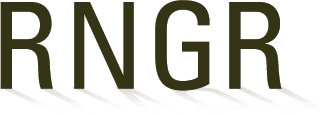Taxodiaceae (Taxodium)
Taxodium (distichum)
Taxodiaceae
Redwood Family
Taxodium
distichum
(L.) L.C. Rich.
Bald cypress
TAXDIS
Louisiana
Bald cypress is found from New York south and west to Texas, Illinois, Missouri and east to Florida. Our seed sources are from south central Missouri.
plants
seed
Bareroot (field grown)
1+0
1 Years
Height: 36 to 48 in
Caliper:0.25 to 0.50 in
Root System: Root system must balance top growth.
Seeds are purchased from Louisiana and other locations.
We clean our seeds with a Jesse aspirator.
We air dry seeds on stacked, ventilated screens to facilitate seed extraction. We clean seeds with a brush machine followed by a Jesse aspirator to remove fine chaff.
There are 11,500 seeds per kilogram (52,000 seeds per pound) (Bonner 2004).
Seeds are dried to less than 10% seed moisture content prior to storage. We store our seeds in sealed plastic bags inside sealed plastic tubs in a cooler at 36 F.
Seeds are soaked in running water for 21 days. We stratify seeds for 78 days in the cooler at 36 F. We plant seeds in late April using a seeder set at 2nd gear into prepared field beds.
Soils: Our field soils are silty clay loams.
The spring before planting, we amend the soils with 700 lbs/acre of 1N:3 P205:5K20, grow a soybean cover crop, and fumigate in the fall. We use Roundup Ready soybeans so we can control weeds by using glycosate herbicide without harming the cover crop. During early August, we disk under the cover crop and disk the soils several times during the next 6 weeks to obtain a smooth soil surface. Soils are fumigated in late September. Field Bed Preparation: We mark out and form beds as needed. Beds are prepared with a rototiller/seedbed former and are typically 4 to 6 inches high and 4 ft wide. Fields are cultivated for weeds as needed throughout the growing season.
Irrigation: We use overhead irrigation with two inch pvc pipe that can be moved from field to field each year. Our principle water source is from 3 on-site wells and is very good quality water.
We sow seeds at least .25 inches deep to protect them from deer, rodents and birds. Seeds are covered and irrigated when soils appear to be drying out on warm days. We apply old sawdust and hydromulch after sowing.
1 month after emergence in the spring
Year 1: Fertilization: We apply ammonium sulfate 21-0-0-24 with a mechanical spreader. We put on the first application the last week of May and to only those 1+0 seedlings that have been germinated for at least 5 or 6 weeks. We put down our last application during the last week of July. We apply fertilizer at the rate of 125 lbs/acre. Frequency of application depends on the species and how they look that season. We irrigate for at least 45 minutes following all fertilizer applications. This insures that foliage will notburn and incorporates fertilizer into the root zone.
ROOT PRUNING PROCEDURES: Seedlings are root pruned during June. Pruning depth is at least 10 inches for 2+ 0 stock. Irrigate heavily for 2 to 3 days prior to pruning to saturate the root zone. Set pruning blade to slightly wrench seedlings as they are pruned. Check pruning depth frequently and adjust as needed. Irrigate for a minimum of 2 hours following root pruning to settle soil back around roots. This step is critical to eliminate post root pruning mortality. Irrigate field heavily for 2 to 3 days to further settle the soil.
4-5 months
Hardening begins during August. No fertilizer is applied after August. Irrigation frequency and duration is shortened and applied only when needed.
3 months
Lifting window is from late November to April, depending on species. We try to obtain a large a root mass as possible. We try to lift when the majority of leaves have dropped. Seedlings are hand lifted after the seedling beds have been undercut at an average depth of 10 or 12 inches using a lifter. Lifted nursery stock is immediately stored in cooler until graded and bundled. The majority of species are graded, bundled and shipped during February.
3 months
Bonner FT. 20004. The genus Taxodium. In: Woody Plant Seed Manual (on-line version) URL: http://wpsm.net/Taxodiumpdf
Hoss, Gregory. 2005. Propagation protocol for production of Bareroot (field grown) Taxodium distichum (L.) L.C. Rich. plants 1+0; George O. White State Forest Nursery Licking, Missouri. In: Native Plant Network. URL: https://NativePlantNetwork.org (accessed 2025/06/27). US Department of Agriculture, Forest Service, National Center for Reforestation, Nurseries, and Genetic Resources.





